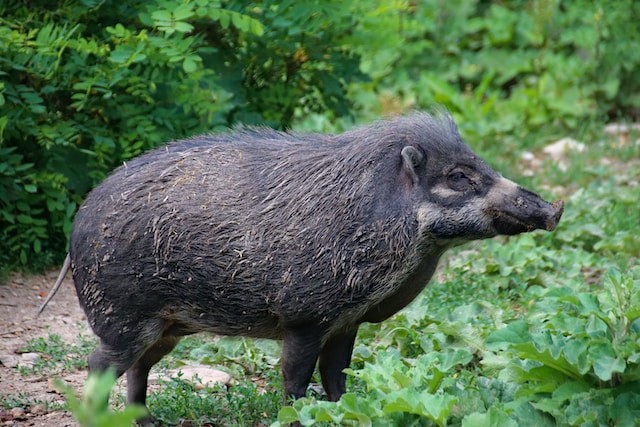The wild boar was formally taken from China's list of endangered species. Over 700 new wildlife species have been added to the list of Terrestrial Wildlife with Important Ecological, Scientific, and Social Values, which was updated and released by the National Forestry and Grassland Administration in late June.
Population of Wild boars

Much of Eurasia and North Africa are home to the wild boar (Sus scrofa), a suid. The species is currently among the most widespread suiforms and mammals in the world, as per Animalia.
Its extensive range, large population, and ability to adapt to a variety of habitats have earned it the designation of least concern on the IUCN Red List. In some of the territory it was introduced to, it became an invasive species.
Since it was a huge game animal for thousands of years and the ancestor of the majority of domestic pig breeds, the wild boar has a long history of being associated with humans.
Wild boars decrease its population due from being a prey
Wild boars are victim to a wide variety of predators of all sizes. Along with other large carnivores like wolves, bears, and humans, huge felines like leopards, lynxes, and tigers are among the most frequent predators of the wild boar, AZ animals.
While their numbers in the wild have drastically decreased in much of their natural territory, there has been a noticeable population increase in other places like Pakistan, Poland, and mainland Europe.
The precise causes are unknown. It is assumed that this is because of their primary predators' reduction, better protection, and more controlled hunting.
Wild boars take off in list of endangered species
Wild boars now live in safer and better environments in China because to years of anti-poaching and environmental preservation measures. Humans were pleased to see that the species' population had recovered, as per CGTN.
A female wild boar can have one or two litters every year, ranging in size from three to twelve piglets. The strong fecundity of wild boars overflows when there are no predators in a habitat.
The species' population is not currently in danger, and it is growing quickly in many areas. In 28 of the 31 provinces on the Chinese mainland, wild boars have been spotted. Among them, wild animals have harmed over 850 county-level areas spread across 26 regions.
Wild boars could be freely hunt down?
According to Jin Kun, a researcher at the Chinese Academy of Forestry, delisting wild boars will open the door to hunting or other preventative and control methods appropriate to local conditions, allowing for more adaptable and efficient solutions to the harm caused by wild boars.
Wild boars can still be placed under provincial-level key protection to continue performing their ecological roles in regions where they are not particularly destructive or where they and their natural predators like tigers, leopards, and jackals are basically in balance.
Despite being taken off the list, the expert believes that the species should still be protected. Hunting activities must take place in approved locations, during approved times, and using approved equipment.
Related Article: Wild Hogs Running Amok in Florida Following Habitat Loss
© 2025 NatureWorldNews.com All rights reserved. Do not reproduce without permission.





